Knowing how to start a fire is an essential skill, particularly in survival situations when stranded outdoors. It can provide warmth, a means to cook food, purify water, and signal for help. This guide explores various methods to ignite a fire, focusing on safety, practicality, and utilizing readily available materials. From traditional techniques involving flint and steel to modern tools like ferro rods, and even improvisational methods using everyday items, this post covers the essential knowledge needed to light a fire in any situation. Readers will learn to prepare, ignite, and maintain a fire efficiently, ensuring they are well-equipped for survival scenarios.
Contents
Understanding Basic Fire Principles
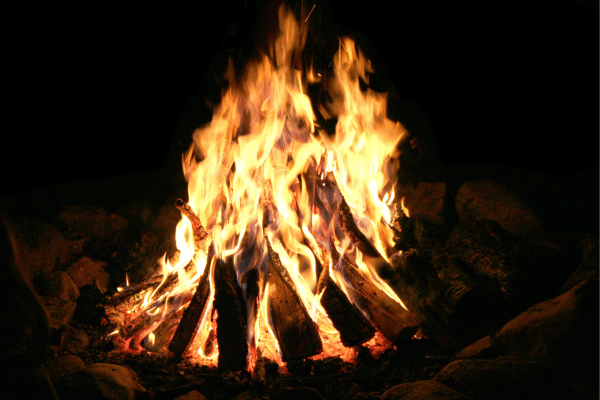
The foundation of starting a fire lies in understanding the fire triangle: heat, fuel, and oxygen. Heat acts as the ignition source, fuel is the combustible material, and oxygen supports the combustion process. Successful fire starting hinges on balancing these elements. Too much or too little of one component can hinder ignition or extinguish a fire. Recognizing how these components interact enables individuals to troubleshoot issues when attempting to start a fire, ensuring a higher success rate.
Before attempting to light a fire, one must appreciate the conditions that facilitate combustion. High humidity or wet conditions require more heat and finer, drier tinder to initiate. Additionally, the arrangement of fuel — from fine tinder to larger kindling and finally to fuel wood — plays a crucial role in sustaining the fire. Mastery of these principles allows for adaptation to various environments and conditions, ensuring that a fire can be started and maintained regardless of the situation.
Preparing Your Fire Site

Selecting an appropriate location for a fire is crucial for safety and effectiveness. The chosen site should be clear of any vegetation, overhanging branches, and away from tents or other flammable materials. This precaution minimizes the risk of accidental fires spreading. Additionally, the site should be shielded from the wind to protect the initial flames and provide a stable environment for the fire to grow.
Once a safe location is determined, the next step involves preparing the fire bed. If the ground is damp or covered in snow, creating a platform using green branches or rocks can insulate the fire from moisture. This platform also serves to concentrate the heat and make the fire more efficient. Surrounding the fire with rocks can further contain the fire and reflect heat back, although care should be taken to avoid using rocks from water bodies as they can explode when heated.
Gathering Materials
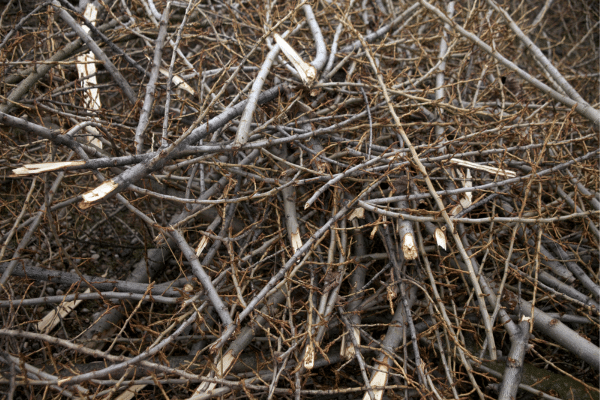
The success of fire starting begins with the collection of proper materials. Tinder, kindling, and fuel wood are the three categories of materials needed, each serving a distinct purpose in the fire-building process. Tinder consists of small, highly combustible materials that can catch fire from a spark. Examples include dry grass, leaves, pine needles, or fine wood shavings. This initial fuel must be dry and finely divided to catch fire easily.
Kindling follows tinder in the fire-building hierarchy, comprising slightly larger materials that catch fire from the burning tinder. Small twigs, sticks, or split wood pieces are ideal kindling, bridging the gap between the tinder’s quick flames and the larger fuel wood. Fuel wood, the final category, consists of larger pieces of wood that burn longer and sustain the fire. Collecting a sufficient quantity of each material before attempting to start the fire ensures a smooth transition from ignition to a stable, burning fire.
Modern Fire Starting Tools
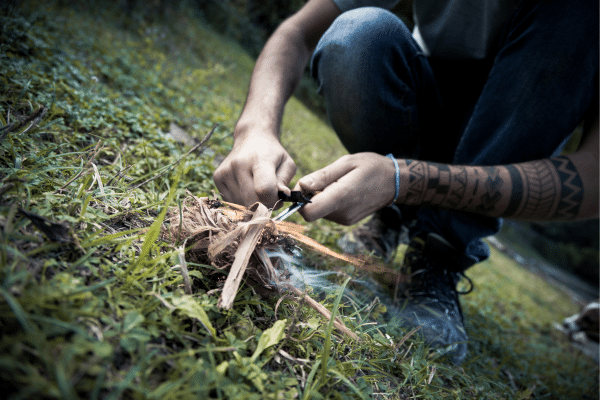
Modern fire-starting tools have revolutionized the way fires are ignited, especially in survival situations. Ferro rods, magnesium fire starters, and waterproof matches are among the most reliable and efficient tools available. These tools are designed to produce sparks or flames under adverse conditions, offering a significant advantage over traditional methods. Ferro rods, for example, can produce sparks even when wet, making them invaluable in damp environments.
Incorporating these tools into a survival kit is highly recommended. Practice is crucial to mastering their use effectively. Unlike traditional methods that require significant physical effort and skill, modern tools simplify the process but still require knowledge of proper technique. For instance, using a ferro rod involves striking it at the correct angle to produce sparks capable of igniting tinder. Familiarity with these tools before an emergency arises can make a critical difference in survival situations.
Alternative And Creative Fire Starting Methods
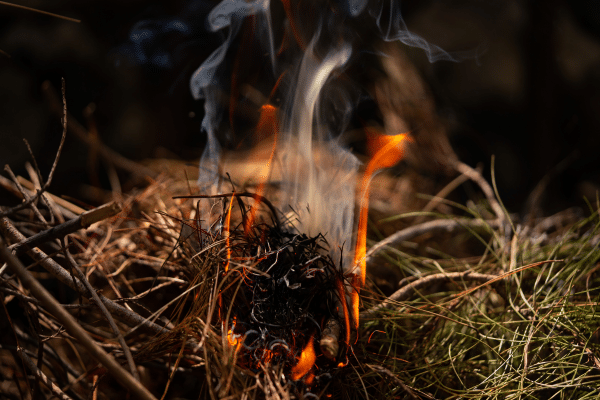
Sometimes, traditional and modern methods may not be an option due to a lack of tools or materials. In such cases, alternative and creative methods of starting a fire can be lifesavers. Everyday items like batteries and steel wool or a soda can and chocolate can be used to start a fire. The battery and steel wool method involves creating a short circuit that ignites the steel wool, while polishing the bottom of a soda can to reflect sunlight onto tinder can create enough heat to ignite.
Understanding the principles behind these creative methods is essential. The goal is to generate heat through friction, electrical energy, or concentration of sunlight. Each method requires a specific set of conditions and materials to be effective. For example, the soda can method is dependent on sunny conditions, while the battery and steel wool method requires both components to be dry. These methods underscore the importance of improvisation and a deep understanding of fire-starting principles.
Maintaining And Extinguishing Your Fire
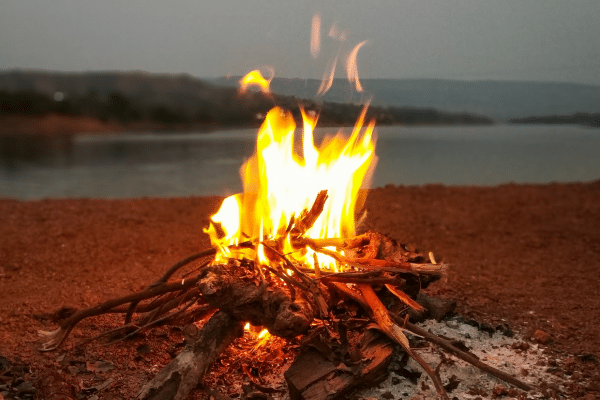
Once a fire is ignited, maintaining it requires continuous attention and addition of materials according to the fire’s needs. The transition from tinder to kindling to fuel wood should be gradual, ensuring that each stage is fully engaged before adding larger pieces. This process prevents smothering the fire and promotes a steady, controllable burn. Adjusting the fire’s size and intensity is necessary for cooking, warmth, or signaling, and understanding how to control these aspects is crucial.
Extinguishing a fire safely is as important as starting one. Ensuring the fire is completely out before leaving the site is crucial to prevent wildfires. This involves spreading the embers, dousing them with water, and stirring the ashes to extinguish any remaining hot spots. The fire site should be cool to the touch, indicating that no hidden embers remain that could reignite. Leaving a fire unattended or improperly extinguished can have devastating environmental consequences.
The Bottom Line
Mastering the art of starting a fire is a fundamental survival skill that encompasses a range of techniques, from traditional methods to modern innovations and even creative solutions using everyday items. Each method has its place, depending on the environment, available materials, and the individual’s skill set. Preparation, practice, and a deep understanding of the principles of fire are essential to ensure that one can effectively ignite and maintain a fire in any situation. Whether for warmth, cooking, or signaling for help, the ability to start a fire can be the difference between survival and distress in the wilderness.


